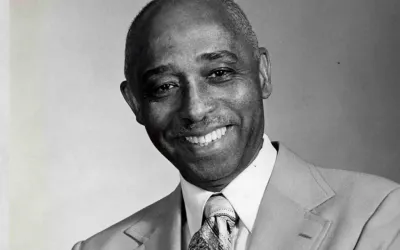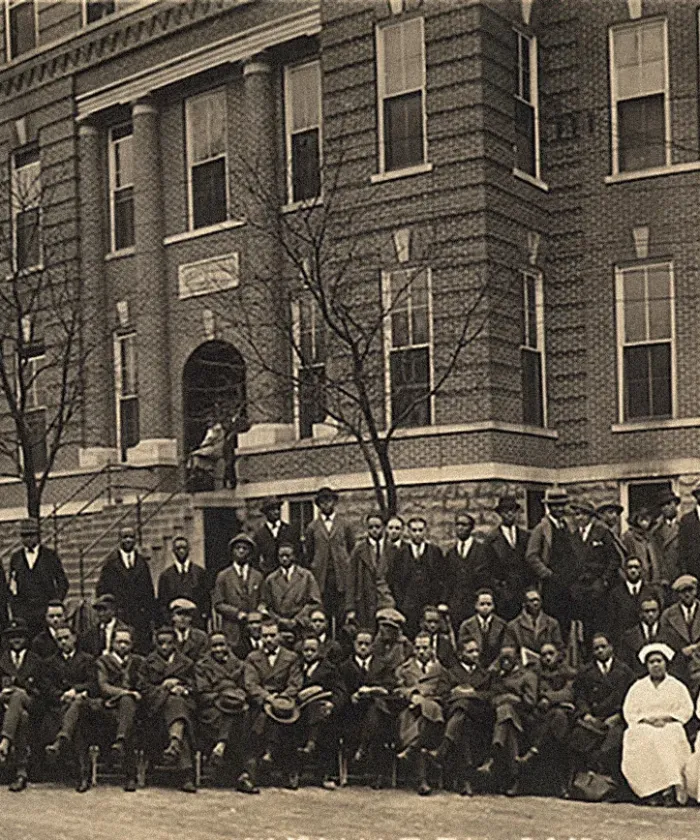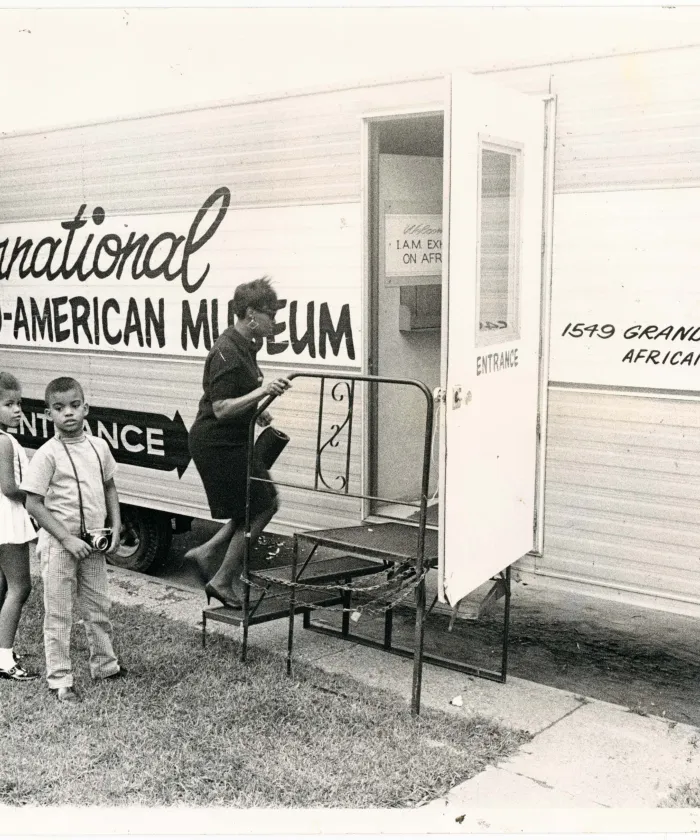
Medical Doctor
Compassionate physician. Champion of equitable access to care. Dr. Charles H. Wright exemplified the principles of the medical profession set forth in the Hippocratic Oath: “Do No Harm.”


Memory Keeper
Driven by his vision, Dr. Wright set out to create a repository for African American history and culture — a space for celebration and reflection that would inspire generations.

Explore His Life and Legacy
1918
Dr. Wright was born on September 20 in Dothan, Alabama, to Reverend William (“Willie”) and Laura Wright, during the Jim Crow era, when laws strictly enforced racial segregation.
The Wright family was close-knit, hardworking, deeply religious, and valued education.

1935

At 16, he graduated at the top of his class from Southeast Alabama High School and enrolled at Alabama State College.
In Dothan, Black students had to pay tuition, with some churches offering assistance. Schools lacked government funding, were heated by wood, and had no running water.
1939
At 21, he graduated from Alabama State College and was fired from the campus newspaper for condemning racism in an editorial.
During this time, he worked as a lab assistant for Professor Henry Van Dyke, who tutored him in organic chemistry to prepare for medical school.

1943

In the 1940s, only two medical schools accepted African Americans: Howard University and Meharry Medical College. He chose Meharry and graduated at age 25.
1945
After medical school, he completed a nine-month pathology residency at Harlem Hospital, one of the few institutions accepting Black doctors.
In 1945, he moved to Cleveland for a second residency at Cleveland City Hospital, where he interacted with Latin American colleagues and began studying Spanish, eventually becoming fluent.

1950

After completing his second residency, he passed the medical licensing exam and moved to Detroit, where he established a general practice and met his wife, librarian Louise Powell Lovett.
After four years, they relocated to New York City for his obstetrics and gynecology residency at Harlem Hospital, where their first daughter, Stephanie, was born in 1952. His second daughter, Carla, was born in 1956, after the couple returned to Detroit.
1965
After working to integrate Detroit’s hospitals, he served as an emergency physician during Civil Rights Movement marches in Alabama and Louisiana.
That same year, he founded the International Afro-American Museum, which became a nonprofit the following year.

1987

Over the decades, the museum grew, and the board renamed it from the International Afro-American Museum (IAM) to the Afro-American Museum of Detroit.
With the need for more space, Dr. Wright, the museum team, and the community spent years raising funds. In 1987, after securing land and $1.4 million from the City of Detroit, the new Afro-American Museum opened.
1989

After each of them had lost their spouses, Dr. Roberta Hughes Wright (nee Greenidge) and Dr. Charles H. Wright are married. Dr. Roberta Hughes Wright, at the time, was both an attorney and professor.
Dr. Roberta Hughes Wright was a member of the women's committee, and the popular, annual golf outing still bears her name.
1997
Nearly a decade into his retirement, Dr. Wright witnessed the opening of the museum’s third location on Warren Avenue.
The 125,000-square-foot building boasts Michigan's largest dome outside of the State Capitol in Lansing, along with a long-term exhibition, four galleries, a theater, store, multipurpose room, and library.
The library is named in honor of his wife, Louise, who passed away in 1985.

2002

After decades of service as an OB-GYN and a dedicated activist and advocate for his community, Dr. Charles H. Wright passed away from a heart attack at 83 on March 7.

Support Dr. Wright's legacy. Become a member!







